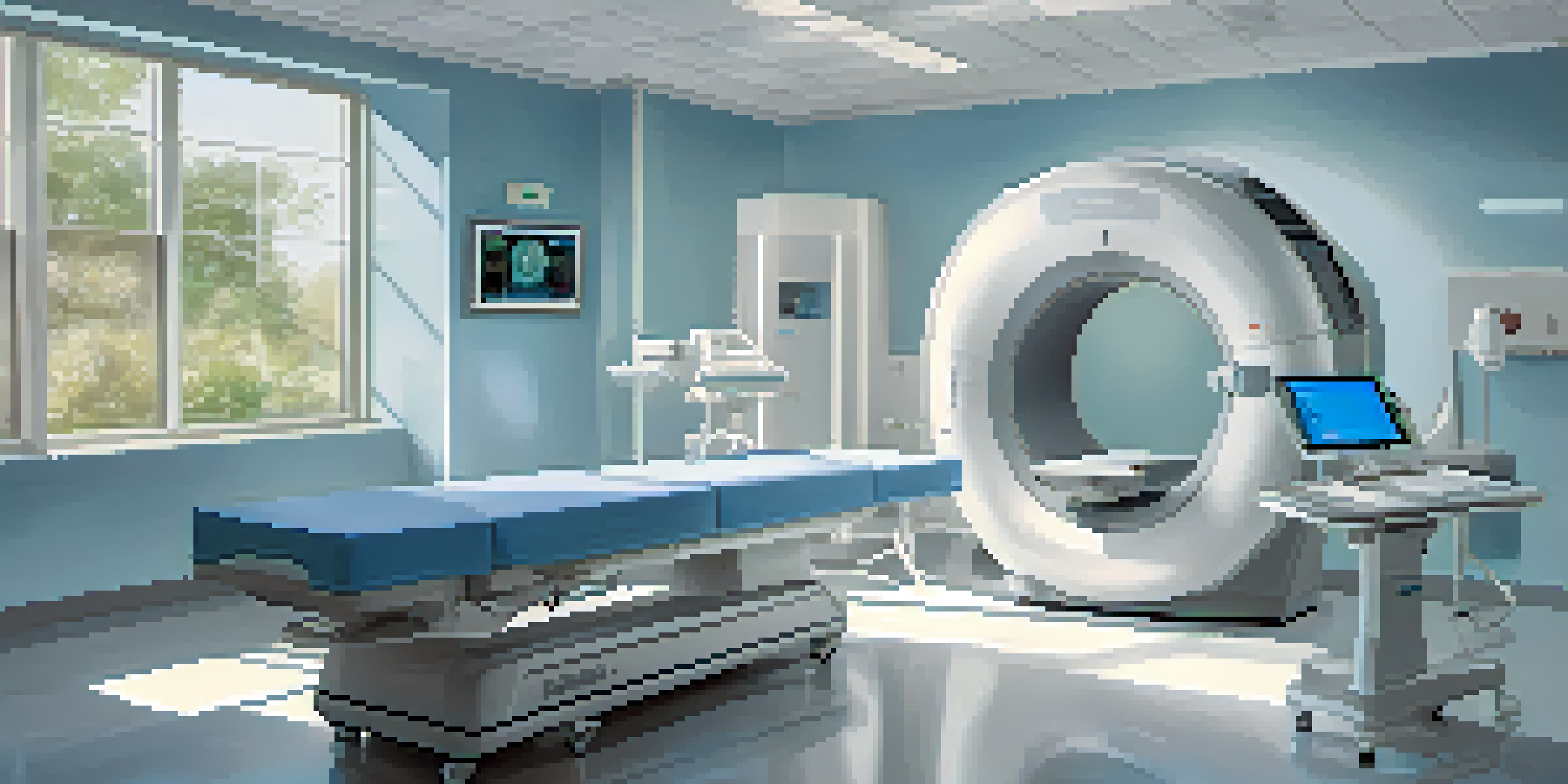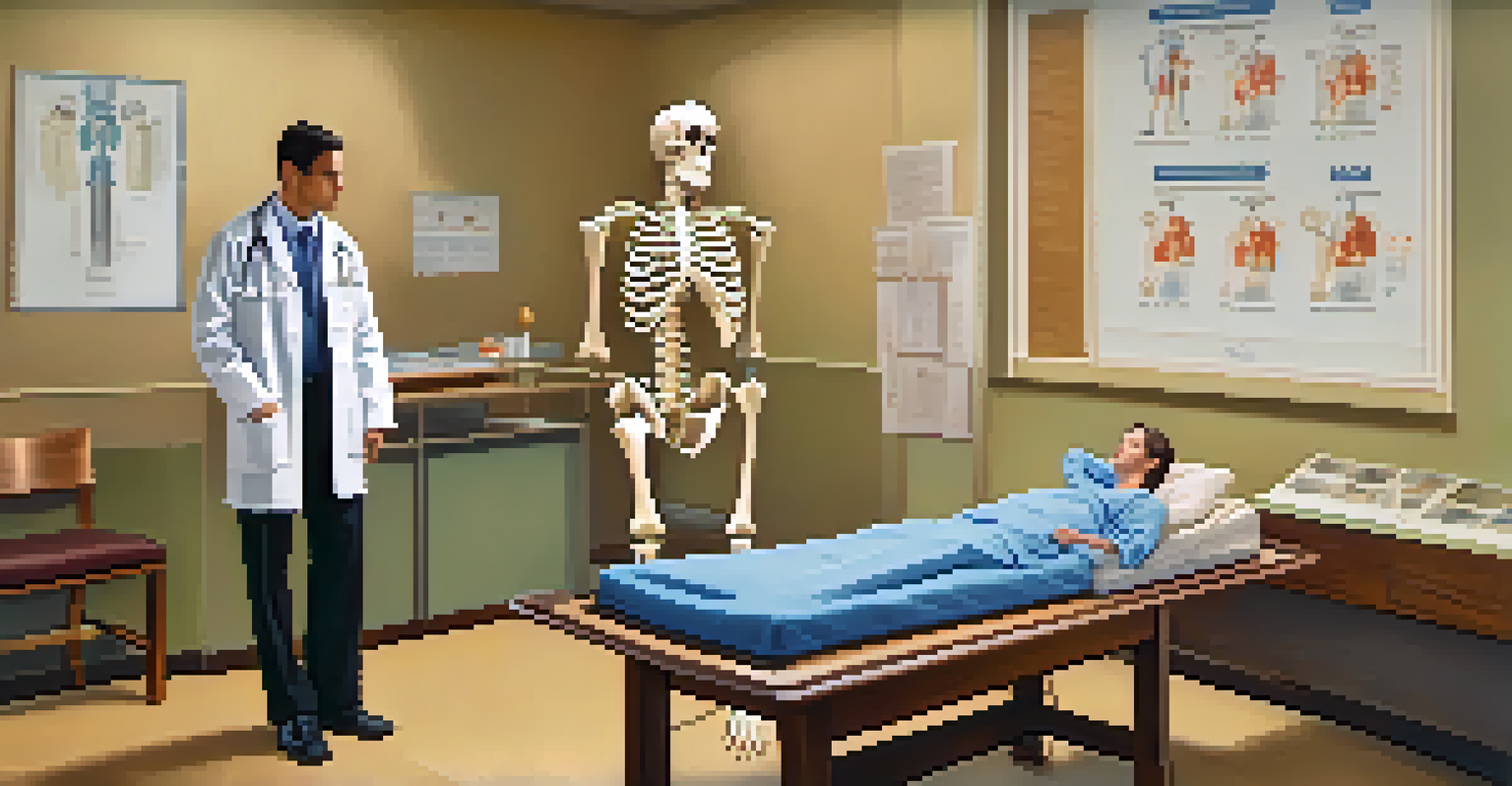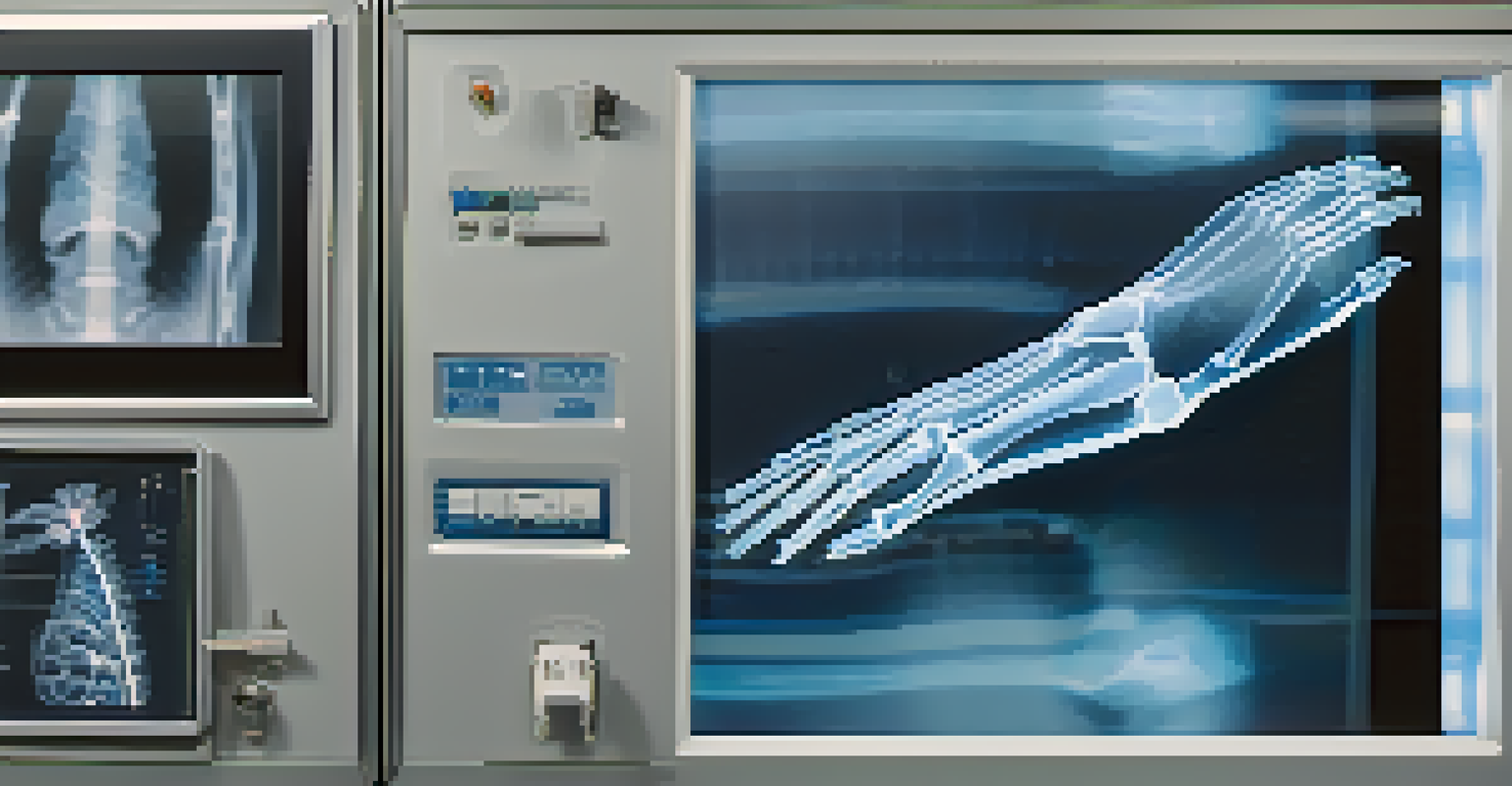Radiation Safety in Medical Imaging: Best Practices

Understanding Radiation in Medical Imaging
Radiation plays a crucial role in medical imaging, providing vital diagnostic information. Techniques like X-rays, CT scans, and MRIs utilize different types of radiation to visualize the body's internal structures. While these technologies are invaluable, understanding the nature of radiation and its effects is essential for both patients and healthcare providers.
Radiation is a tool that, when used responsibly, can lead to remarkable advancements in medical diagnostics.
Ionizing radiation, which includes X-rays and gamma rays, has enough energy to remove tightly bound electrons from atoms. This process can potentially lead to cellular damage, which is why safety measures are paramount. Knowing how and why radiation is used helps demystify the process and alleviate patient concerns.
In essence, having a solid grasp of the principles of radiation can empower both patients and providers to make informed decisions about imaging procedures. This foundational knowledge sets the stage for understanding how to navigate the potential risks while maximizing the benefits.
The Importance of Justification in Imaging Procedures
One of the first steps in radiation safety is ensuring that every imaging procedure is justified. This means that the benefits of the procedure must outweigh the risks associated with radiation exposure. Healthcare providers should assess whether the imaging is necessary for diagnosis or treatment, fostering a culture of responsible imaging.

For example, if a patient has a mild injury that can be evaluated through physical examination, opting for an X-ray may not be justified. By meticulously evaluating the need for imaging, healthcare professionals can significantly reduce unnecessary radiation exposure. This practice not only protects patients but also enhances the overall trust in medical imaging.
Understanding Radiation's Role
Radiation is essential in medical imaging, providing crucial diagnostic information while necessitating an understanding of its risks and benefits.
Justifying the use of radiation fosters a collaborative dialogue between patients and providers. Patients should feel encouraged to ask questions about the necessity of imaging, ensuring they are active participants in their healthcare journey.
Optimizing Imaging Techniques to Reduce Radiation Exposure
When imaging is deemed necessary, optimizing the technique can greatly reduce radiation exposure without compromising image quality. This involves adjusting machine settings, using lower doses, and employing advanced technologies designed to minimize exposure. For instance, newer CT scanners often come equipped with dose-reduction features.
Safety in medical imaging is not just a responsibility; it's a shared commitment among patients and providers.
Radiologists and technicians play a pivotal role in this optimization process. By constantly updating their skills and knowledge about the latest advancements in imaging technology, they can implement best practices that prioritize patient safety. Collaboration among the imaging team ensures that everyone is committed to delivering the safest care possible.
Ultimately, reducing radiation exposure while maintaining diagnostic accuracy is a shared responsibility. Engaging in continuous training and utilizing the latest technology can make a significant difference in promoting radiation safety.
Patient Communication: Key to Radiation Safety
Effective communication with patients about radiation risks and benefits is crucial for ensuring safety in medical imaging. Providers should openly discuss the reasons for the imaging, what to expect during the procedure, and any potential risks involved. This transparency builds trust and helps patients feel more comfortable.
For example, using simple language and relatable analogies can help demystify complex concepts. Instead of using jargon, providers might say, 'Getting an X-ray is like taking a picture, but it's a special kind of picture that uses radiation.' This kind of explanation can ease fears and encourage informed consent.
Justification is Key in Imaging
Every imaging procedure must be justified to ensure that its benefits outweigh the risks associated with radiation exposure.
Moreover, encouraging patients to ask questions fosters an environment of engagement. When patients feel informed and involved, they are more likely to adhere to recommended imaging protocols and prepare adequately for their procedures, further enhancing safety.
Protecting Vulnerable Populations in Imaging
Certain populations, such as children and pregnant women, require special consideration when it comes to radiation exposure. These groups are more sensitive to the effects of radiation, making it even more critical to follow best practices in medical imaging. Tailoring imaging approaches to minimize exposure for these populations is essential.
For instance, pediatric imaging often employs specific protocols that reduce radiation dose while still providing clear diagnostic images. This might involve using special equipment designed for smaller bodies or applying different imaging techniques that are safer for children. Healthcare providers must be vigilant and proactive in protecting these vulnerable groups.
By being aware of the unique risks associated with different populations, healthcare professionals can better advocate for their patients. This diligence not only prioritizes safety but also reinforces the commitment to ethical medical practices.
Regular Monitoring and Quality Assurance in Imaging Facilities
To maintain high standards of radiation safety, regular monitoring and quality assurance are essential in imaging facilities. This involves routine checks of imaging equipment to ensure it operates at optimal levels and adheres to safety standards. Regular audits help identify areas for improvement and enhance overall practice.
Quality assurance protocols might include calibration of machines, staff training sessions, and reviewing patient outcomes. By implementing these measures, facilities can ensure that they are minimizing radiation exposure while providing accurate diagnostic information. A culture of quality assurance promotes continuous improvement.
Advancements Enhance Safety
Technological advancements in medical imaging, such as digital X-rays and AI, significantly improve image quality and reduce radiation exposure.
Moreover, engaging in consistent monitoring not only protects patients but also boosts staff confidence. When healthcare professionals know they are working in a safe environment, they can focus on delivering the best care possible without unnecessary worry about radiation risks.
Advancements in Technology for Radiation Safety
The landscape of medical imaging is continually evolving, driven by advancements in technology that enhance radiation safety. Innovations such as digital X-rays, which require lower doses than traditional films, are becoming the norm. These technologies not only improve image quality but also significantly reduce radiation exposure.
Moreover, artificial intelligence (AI) is playing an increasingly important role in imaging. AI algorithms can assist radiologists in detecting abnormalities with greater accuracy, potentially reducing the need for repeat scans. This not only saves time but also minimizes additional exposure for patients.

As technology progresses, staying informed about these advancements is key for healthcare providers. Embracing new tools and techniques is essential for fostering an environment where patient safety remains a top priority.
Creating a Culture of Safety in Medical Imaging
Ultimately, fostering a culture of safety in medical imaging requires a collective effort from all stakeholders—patients, healthcare providers, and imaging facilities. It starts with education and awareness, ensuring that everyone understands the importance of radiation safety. When safety becomes a shared value, it positively impacts patient care.
Encouraging open dialogue about concerns related to radiation exposure empowers patients and creates a more collaborative healthcare environment. This culture also extends to staff training and continuous education, ensuring that everyone is equipped with the latest knowledge on best practices in radiation safety.
By prioritizing a culture of safety, we can enhance the overall imaging experience while minimizing risks. When patients and providers work together towards a common goal, the benefits of medical imaging can be maximized, ensuring optimal health outcomes.